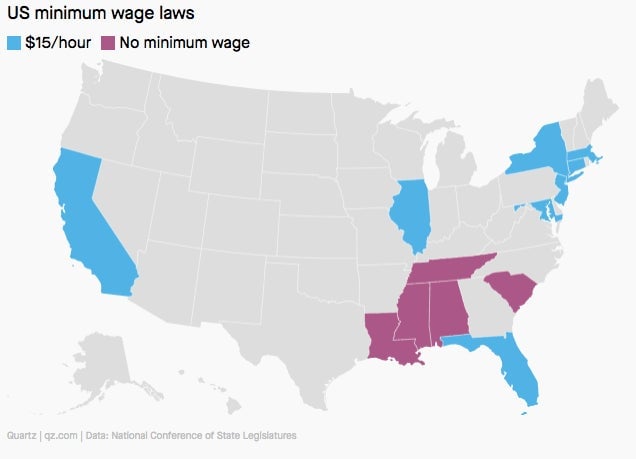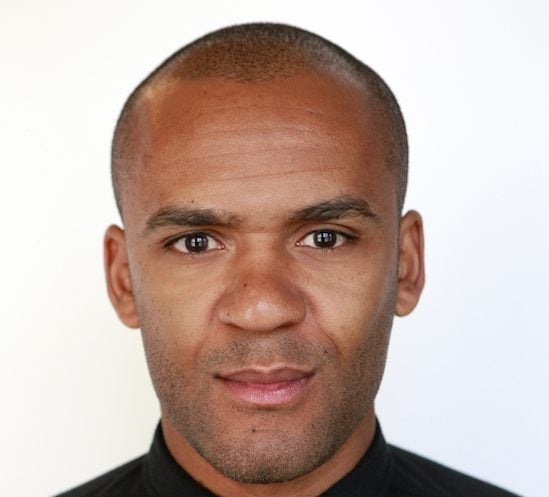The Memo: Department of domestic affairs
To modern workers everywhere,

To modern workers everywhere,
Joe Biden is about to become America’s oldest president ever, but there’s at least one way in which he resembles someone a couple of generations younger: he has both a highly successful career and a wife who works outside the home.
Even in 2020, this is not typical for men of Biden’s professional stature. Recent sociological research finds that in high-earning US households—those with income in the top 1% for the country—the breadwinners tend to be men in heterosexual marriages, and 7 out of 10 of them have a stay-at-home spouse.
You could argue that it’s each couple’s prerogative to figure out the division of labor, and of course it is; but all of those individual examples add up to a norm that has not served women well in the decades since they began pouring into the skilled workforce.
The longstanding message is that to have a successful career, you need a lot of extra support on the home front. This would be fine, except that we know support on the home front is not handled equally between the sexes. In that study of high-earning households, the rare women who earned enough to achieve top 1% status weren’t any more likely to be married than single—and of those who were married, only 22% had a spouse who stayed home.
The upshot for women in the workplace is not only that they don’t tend to have an adequate level of support at home to get to where they want to go—they’re competing with men who do.
The dynamics of one prominent couple won’t change that. But women like Jill Biden—along with lawyer Cherie Blair, who worked when her husband, Tony, was UK prime minister, and Wall Street veteran Mary Pat Christie, who out-earned her husband, Chris Christie, when he was New Jersey’s governor—are slowly normalizing the idea that not every successful man needs a great woman behind him. Sometimes she can be right alongside him, with a successful career of her own. —Heather Landy
Five things we learned this week
Leaders can bring workplaces together when their country is divided. They just need to remember some universal truths as they go about it.
Uber’s age of special treatment isn’t over. California voters overwhelmingly approved the gig economy’s “third way” of classifying drivers.
We should prepare for a future in which creativity is a workforce survival skill. Here’s how to start.
The “painted door” technique can help any business turn failures into growth. Steal a page from product management to test your best ideas.
The White House is a workplace infested with Covid-19. Its next occupants may want to call in the hydrogen peroxide cavalry.
It’s a fact
More than 40% of the US workforce is in places where the minimum wage is climbing to $15 or more. A niche left-wing issue no longer, the gradual introduction of a $15 wage floor passed in right-leaning Florida last week with nearly 61% of the vote. Quartz at Work’s Michelle Cheng has the story here.

30-second case study
Sylvain Labs founder and CEO Alan Sylvain didn’t know what he was going to do the morning Hillary Clinton conceded the 2016 US presidential election to Donald Trump. But when he arrived at his office in lower Manhattan, and saw the devastation on the faces of his employees, he knew he couldn’t ignore it. An equally devastated Sylvain gathered the staff in a conference room of the strategy and design consultancy for an impromptu meeting that essentially became a group therapy session. The conversation, he recalls now, was “colorful, dynamic, raw.” More than a few tears were shed. “That day ended up becoming something we’ve talked about a lot over the last four years,” he says.
This time around, Sylvain was prepared. When he spoke with us the day before election day, he had just gotten off a call with his 50-person team, in which he confessed he was feeling distracted and stressed; he said he suspected many at the firm were “probably not going to be very productive [the day after the election] one way or another, no matter how this thing goes, and I respect that.” He had already cleared his calendar for Nov. 4, save for 90 minutes, from 10am to 11:30am, for a post-election all-hands meeting. “The learning from 2016 was to proactively schedule these sorts of times to come together and reflect on our experience,” Sylvain says.

The takeaway: Until recently, few business leaders in the US ever bothered thinking about the day after an election as anything unusual in the workplace. That changed with Trump—but the trend is bigger than any one candidate, or even politics. “Since 2016, there’s been this increasing narrative about how businesses are taking the role of government and being caretakers for society,” Sylvain says. “It’s also true in how we cope with the elections. Increasingly we’re talking about the workplace as a safe space… and that didn’t exist during Bush v. Gore. There’s a new expectation for companies to provide a safe mental and emotional environment in the face of all these [challenges].”
+ Alain Sylvain is a Quartz contributor. Read his articles on leadership, work, and activism here.
It’s Quartz Members Week!
For this week only, become a member for 50% off your first year* with the code MEMBERSWEEK. With membership, you can hop right over the paywall on any of Quartz’s articles, explore our library of 101 (and counting!) field guides unpacking the global economy’s most important trends, and access all of our Quartz at Work (from home) workshop playbacks.
*Please note, this offer does not apply to Quartz Japan memberships
This week’s field guide: Climate tech

A small but passionate group of founders and engineers are leaving companies like Tesla, or skipping the tech giants entirely, to take aim at what they call the biggest opportunity of a generation: climate tech.
We’ve been here before. A decade ago, enthusiasm swelled for the renewable energy boom known as clean tech. That led to billions of dollars in losses as startups furiously spent venture capital with few solvent companies to show for it.
But climate funds are popping up once again. Billions of dollars are pouring back into the sector. Investors remain a bit nervous, however, about the next big bust. Can Silicon Valley invest its way out of climate change? Read more in Quartz climate reporter Michael Coren’s look at why this time perhaps really is different, part of our new field guide on climate tech’s second shot.
Words of wisdom
“Dream with ambition, lead with conviction, and see yourself in a way that others might not see you, simply because they’ve never seen it before.” —Kamala Harris, US vice president-elect
ICYMI
Quartz is under new ownership! Co-founder and CEO Zach Seward and our editor in chief, Katherine Bell, announced a management buyout this week. The purchase from Uzabase, a publicly traded company based in Japan, means that Quartz once again is an independent media company—and we are doubling down on our mission to make business, and workplaces, better. Read a letter from Zach here. And thank you, subscribers to The Memo, for your ongoing support of Quartz.
You got The Memo!
Our best wishes for a productive and creative day. Please send any workplace news, comments, minimum wage hikes, and management buyouts to [email protected]. Get the most out of Quartz by downloading our app and becoming a member. This week’s edition of The Memo was produced by Heather Landy and Sarah Todd.